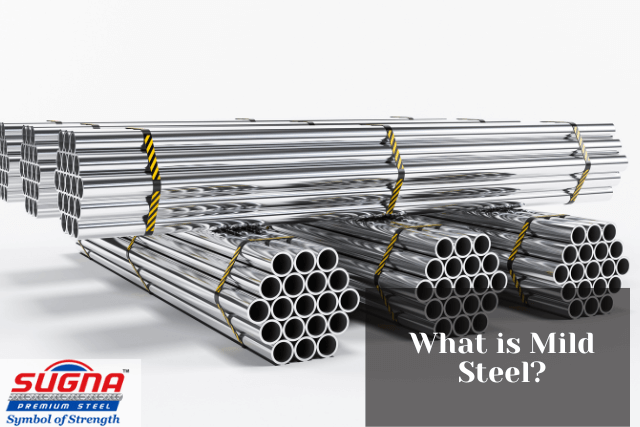Mild steel has become a sought-after material in several industries because of its superior qualities. Due to its unparalleled weldability and machinability, utilization has increased dramatically.
In this blog, I shall talk about what is mild steel, its top properties, applications, and its production. So, without further delay, dive into the content.
What is Mild Steel?

A form of carbon steel with little carbon content is called mild steel. Mild steel also referred to as low-carbon steel, has a carbon content of between 0.05% and 0.25% by weight.
On the other hand, high-carbon steel generally weighs 2.5%. This is so because it contains only a small amount of other components comprising iron and ferrite. Thus, mild steel is not purely alloy steel.
Top 7 Properties of Mild Steel
Because of its qualities, mild steel is becoming more widely used in a variety of industries. Here, I have discussed the top seven properties of mild steel. Scroll down to look one by one:
1. Carbon Content
A tiny amount of carbon causes mild steel’s characteristics to change. Steels of various sorts are produced with varying carbon contents.
The iron grid has tiny gaps between them. Carbon atoms connect to these gaps, making the material harder and stronger. The less ductility there is, the harder the steel is.
2. Density
The elasticity modulus of commercial-grade mild steel is 210,000 MPa. Its average density is around 7860 kg/m3.
3. Conductor
An excellent conductor of electricity is mild steel. Therefore, using it throughout the welding process is simple.
4. Irresistible
Mild steel’s irresistible characteristics make it simple to magnetize. So mild steel can be used to create electrical equipment.
5. Car-Making
As with structural steel, mild steel is excellent. Mild steel is another material that is used by several automakers to create the body and other components of the car.
6. Hardness
Hardness is the next top property of mild steel. Due to its hardness, mild steel can be easily machined using the lathe, shaper, drill, or milling machine. Carbon can be added to it to increase its hardness.
7. Susceptible to Corrosion
Mild steel has a high carbon content, which makes it particularly susceptible to corrosion. Stainless steel is preferred over mild steel when rust-free components are needed.
How is Mild Steel Manufactured?
Like other carbon steels, it is manufactured identically. In a blast furnace, iron ore and coal are mixed and melted. In the next step, the prepared mixture is moved to another furnace, where any remaining impurities are burned out directly.
If necessary, the steel composition might also be modified at this point. The substance is then poured into a mold during the casting process, where it is allowed to solidify. This is then reduced in size by utilizing cold drawing or hot rolling techniques.
Top 4 Applications of Mild Steel
One of the most commonly utilized forms of steel is mild steel since it can be used to make items in a range of industries. Mild steel is used for many different items, including fencing, signage, automobiles, furniture, and structural needs.
Look through the following list to learn more about the top applications of mild steel:
1. Construction
Materials that are simple to join and strong enough to bear changing loads are needed in the building. This is why mild steel is the best material for heavy use. Therefore, whether large or small, from bridges to buildings, mild steel is used in construction.
2. Applications for Equipment
Mild steel is frequently used in the manufacture of machinery and automobiles. It is reasonably priced, suitable for a range of cutting and coating processes, well weldable, and has sufficient physical properties.
It is advantageous for creating frames, panels, etc. because of these qualities.
3. Pipelines and Poles
Mild steel has exceptional ductility and can tolerate hard situations, making it suitable for manufacturing poles and pipelines.
4. Utensils and cookware
Modern cooks are beginning to recognize the advantages of utilizing mild steel cookware, even though stainless steel cookware used to be the only choice.
The cutting tool can be altered to become a non-stick material and can maintain its edge for a longer period while operating at greater temperatures.
Related Posts:
- What Is The Density Of Steel?
- What Are Mini Steel Plants?
- Which Is More Elastic Rubber Or Steel?
- Mild Steel vs High Steel
Bottom Line
These are a few of the characteristics and applications of mild steel. Mild steel is utilized in virtually all industrial manufacturing and application fields.
I hope you liked reading the blog. Please offer your insightful comments!

